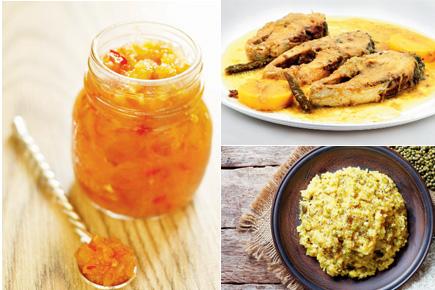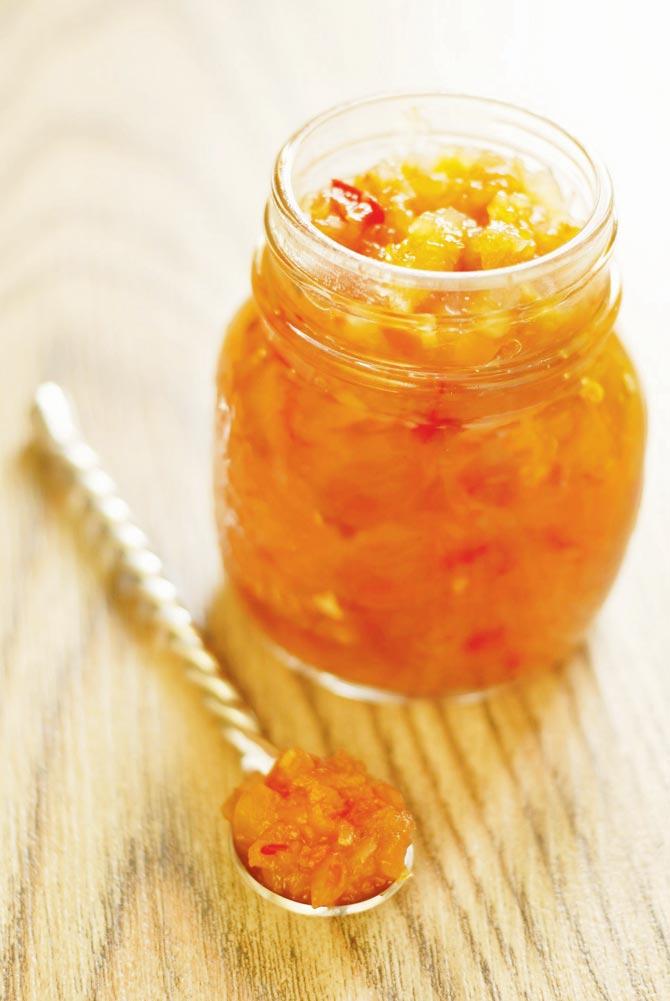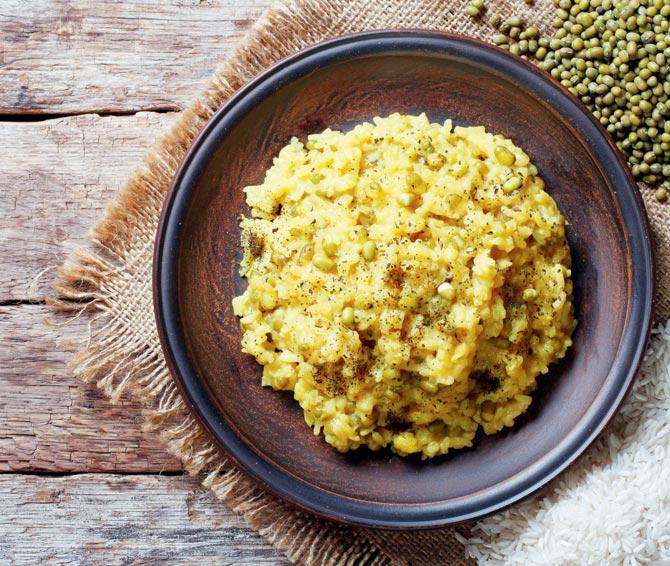In a new book, Massachusetts-based food historian Chitrita Banerji revisits comfort food prepared in Bengali kitchens during monsoon. And, it's not pakoras or bhutta

 Shorshe Ilish. Pictures for representational purposes only
Shorshe Ilish. Pictures for representational purposes only
During the last few days of summer, each longer than the previous one, the endurance of man, land, animals and vegetation is stretched to breaking point. As the people of Bengal live through this scorching, humid hell, waiting for Barsha, the monsoon, some find comfort in quoting the opening phrase of the Meghadootam, a Sanskrit love poem by the Indian poet Kalidasa, 'Asharasya prathama dibase' - 'On the first day of Asharh' - for this is the month which will bring the relief of rain, gentle and violent, to an exhausted earth.
ADVERTISEMENT
Nature, of course, does not always conform to calendar dates. Though the first of the mystic month of Asharh falls in the middle of June, Barsha is sometimes delayed by as much as two or three weeks. In some years there is the welcome presage of a short but violent pre-monsoon downpour, after which the silent summer oppression returns with renewed force for many more days. When the monsoon does finally set in, it too is the most deceptive advent, arriving with sweet succour from the parching heat and showing nothing of the fury which will later swell the rivers to cause ruinous floods.
But then who can think of future disaster while enjoying the immediate relief of life-giving showers? As children, even the first sight of dark clouds rolling towards us from the distant southeast would set us skipping with excitement. The anticipation intensified as the winds gathered force, as the low rumble of thunder was heard and the first streaks of lightning rent the sky.
Shorshe Ilish, Hilsa with Mustard
Friendly disputes arise again over which is the superior: the hilsa from the Ganga by which the West Bengalis swear, or the hilsa from the Padma over which Bangladesh drools. Padma specimens can be much bigger than those from the Ganga, though in terms of flavour and softness of texture, according to the proportion of oil in the fish, the Ganga variety is the superior of the two to my mind, but perhaps that is my Ghoti bias. There are recipes enough for the hilsa to fill an entire book. Individuals, families and regions have all developed their special styles, spices and combinations for this delightful fish. Shorshe Ilish is a classic Bengali preparation for the hilsa. It is simple, and depends on a single predominant taste, that of mustard.
Recipe: Serves 4
- 500 g of peti (stomach) pieces, washed and cleaned
- Grind 1½ tablespoons of pungent black mustard seeds with a touch of salt and a green chilli, to dispel the bitterness of the mustard.
- Mustard seeds ground
- 7-8 green chillies slit them down the middle.
Method: Rub the pieces of fish with salt and turmeric. Heat 4 tablespoons of mustard oil in a karai and add the mustard paste together with ½ teaspoon of turmeric powder. Stir for a couple of minutes and add 250 ml of water. As soon as it comes to a boil, gently put in the hilsa pieces and the green chillies. Cover and cook for ten minutes over a medium flame. Uncover and taste to determine how much extra salt is needed. The water should evaporate sufficiently to leave the fish coated in a thick, grainy, yellow sauce when you remove it. Remove from the stove and add a little fresh mustard oil to the fish. Leave covered for a few
minutes.
 Pineapple Chutney
Pineapple Chutney
Pineapple Chutney
Sometimes, during Bhadra's oppressive rains, tea is all that you want and the loss of appetite is such that even hilsa loses its charm. This is when various chutneys are made, frequently as much for taste as for therapy. Coconut, posto or poppy seeds and mint leaves, ground with green chillies, tamarind, salt, sugar and fresh mustard oil, are used for fresh-tasting raw chutneys. One of the most delicious chutneys, served to the family as also to the guests at weddings, parties and funerals, is made with pineapple, which is a monsoon fruit in Bengal.
Recipe: We take a nice ripe pineapple and peel and cut it into tiny cubes. The important thing is to throw out the hard central portion and to gouge out the eyes with a sharp knife.
Half a coconut is grated. In a medium-sized aluminium karai 2½ tablespoons of ghee are heated and garom mashla consisting of 3 sticks of cinnamon, 3 cloves and 8-10 whole cardamoms are thrown in.
When the fragrance is released, the cubed pineapple, 60 g of raisins and 1 teaspoon of salt are added. These are stirred over a medium heat for four to five minutes before 1 l of water is added. A lot of water is needed to cook the pineapple and to leave some for the sauce. When the pineapple is tender to the point of being almost shredded, the coconut is added along with 250 g of sugar. The chutney is then cooked over a high heat for about five minutes.
The salt and sugar are tested and a teaspoon of flour blended with a little water is mixed into the chutney to give it a smooth texture. After a couple of minutes the chutney is removed from the stove. It is either chilled or served at room temperature, never hot. Bengalis do not eat chutney as a relish with other items of food. It is eaten at the end of a meal, sometimes with papor on the side, before dessert.
 Khichuri
Khichuri
Khichuri
The first day of Barsha is generally honoured with the eating of a special meal, made more enjoyable by the drastic drop in temperature created by the rains and cloud-covered sky. The best known Bengali dish associated with the monsoon is khichuri, rice and dal cooked together with certain spices. This is the housewife's response to the sudden arrival of the monsoon rains, or heavy rain at any other time of the year. It is probably one of the oldest surviving dishes in the Bengali repertoire. From wandering mendicants who begged for their food to various religious orders that observed a strict simplicity of diet, countless people have depended on khichuri to give them a balanced meal. With the refinements of certain spices, it becomes a delicacy which is not too rich for frequent consumption. After 200 years of colonial rule, the British also took it home with them as kedgeree.
Recipe: Serves 5
Ingredients:
- 500 g atap rice (short grained rice)
- 500 g roasted moong dal.
- Garam masala for seasoning: 4 sticks of cinnamon, 2.5 cm long, 4-5 whole cardamoms and 4-5 whole cloves; a liberal pinch of whole cumin seeds; 2 bay leaves;
- Finely-chopped ginger
- 2 whole green chillies
- 1½ teaspoons of turmeric powder
- 60 ml of mustard oil
- Salt and sugar to taste
- Ghee
Method: The rice and dal, rinsed separately under running water in a colander, are left to dry on a flat surface for 15 minutes. This process makes them easier to cook. While they dry I put on the kettle so that I have ready the hot, though not boiling, water you need to add to the khichuri. I heat the oil in a medium-sized, heavy-bottomed deep cooking pot, add the garom mashla and bay leaves and wait for a couple of minutes, without stirring them, for the fragrance to be released by the heat before I throw in the cumin seeds and chopped ginger. These I stir-fry for a couple of minutes, then add the half-dried rice and fry it for two to three minutes. Finally I add the roasted moong dal and the turmeric and stir the mixture for another two to three minutes before pouring on the hot water. The level of water should generally be 4 cm over the rice and dal. If necessary, more hot water can be added towards the end, depending on how thin you like your khichuri or whether the rice and dal are sticking to the pot. Once the water comes to a boil, I add 2 teaspoons of salt and 3 teaspoons of sugar, reduce the heat to low and cover the pot.

Chitrita Banerji. Pic/Noah Simes/DG Communications
Generally it takes about twelve to fifteen minutes for the khichuri to be ready. To avoid sticking and even the slightest burning, which ruins the flavour, I keep checking from time to time and stir the mixture thoroughly with a spatula. If needed, I add a little more hot water. After ten minutes of cooking, it is a good idea to test the grains of rice and dal. When they feel nearly ready, I throw in the green chillies, check for salt and sugar, wait till the consistency is just right, add 2 teaspoons of ghee and remove the pot from the stove. The earlier you add the chillies, the hotter the khichuri will be, for the stirring will blend them in.
 Subscribe today by clicking the link and stay updated with the latest news!" Click here!
Subscribe today by clicking the link and stay updated with the latest news!" Click here!







